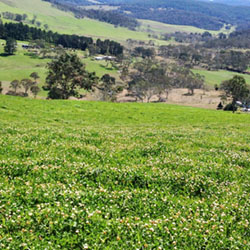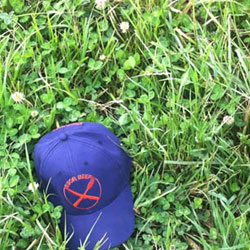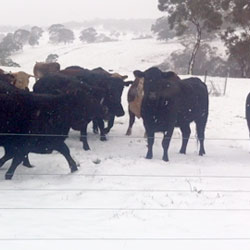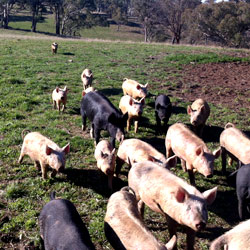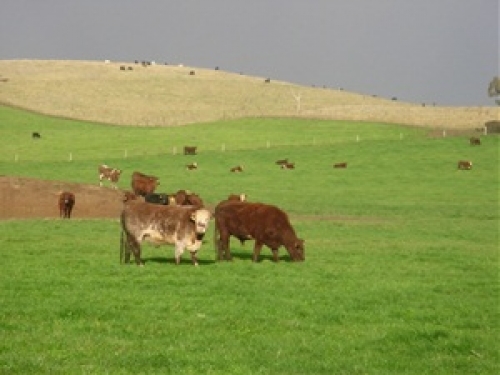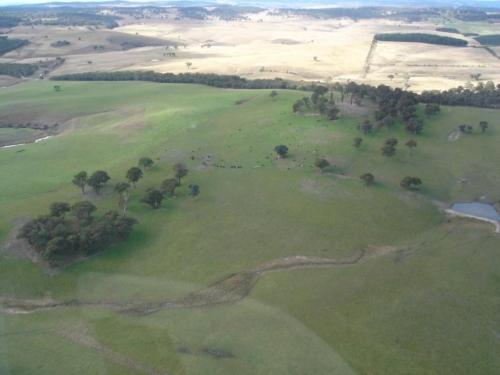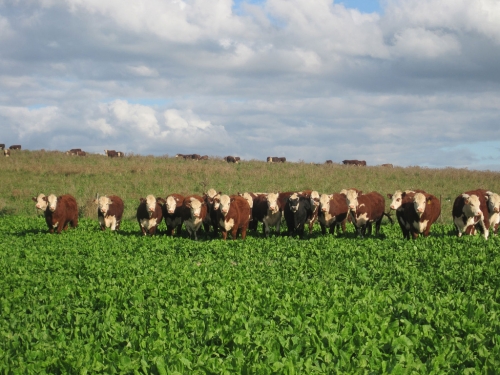Swedes and kale

Swede crop
Forage brassicas such as swedes and kale provide quick and abundant feed, with high digestibility, energy, and protein. These are especially useful in the harsh tablelands winter providing high quality feed when pasture growth is limited.
On one swede paddock at Lakeside, Walcha, enough dry matter was produced on 8ha to feed 80 steers for 100 days through winter.
With the help of agronomist Damien Timbs from Productive Pasture Solutions, Steve Stronach the manager at “Lakeside”, planted a crop of Gauld Guinness Dominion Swedes.
80 steers went on to the 8ha paddock through the winter.
"The crop was planted in December with 0.5kg of seed to the hectare,” Mr Timbs said.
"The paddock was sprayed twice before sowing and then spread with a starter fertiliser when it was sown. In the New Year we applied urea to give 50kg of nitrogen per hectare and sheep manure at a rate of 3 to 4 tonnes per hectare.”
Across the Walcha region there’s usually plenty of feed in spring and summer and growing feed in summer/autumn for winter takes the pressure off pastures during the hardest times.
"The crop grew 15 tonnes of dry matter per hectare and that’s enabled us to run 10 steers per hectare for 100 days,” Mr Timbs said.
"It is much more productive than a crop of oats. You could take a swede crop like that and stock cattle over winter when they are cheaper to buy in store condition instead of buying in October. At 10 to the hectare, you don’t need a big area.”
The feed grown produced more than 800kg of beef per hectare.
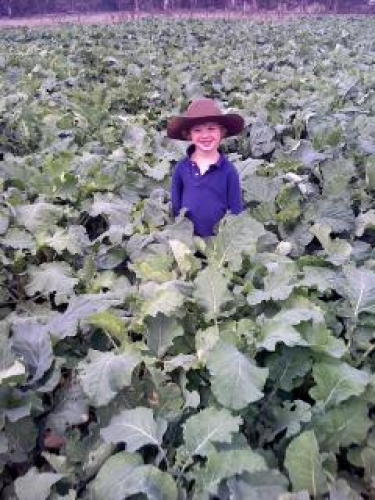
Kale crop
Kale
More than 90% of beef and dairy cattle grazing in the south island of New Zealand are wintered on kale or swedes.
Like swedes kale is sown in the late spring and used as a winter standover crop to be grazed from May to September, providing a large quantity of high quality feed.
A Productive Pasture Solutions trial on Uki, Walcha saw 100 hectares of kale planted. The paddock was strategically sprayed while the crop was growing to clean up problem weeds such as nodding thistles and couch. The paddock carried 6 steers to the hectare averaging 0.85 kg/day for 90 days.
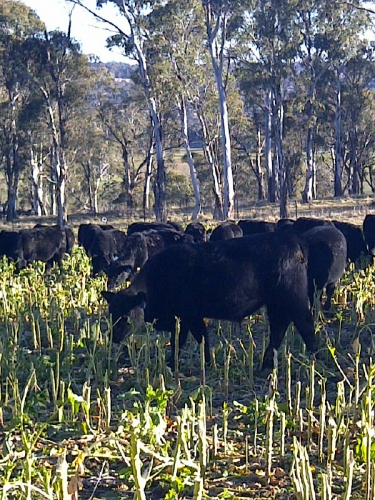
Cattle grazing a kale crop

